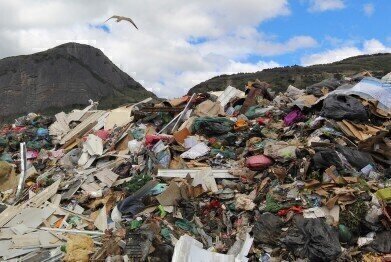Air Monitoring
Where Does Methane Come From? - Landfill
Feb 13 2022
As a naturally occurring gas which is present in all four of the alchemical elements in our environment, there are methane sources of methane which precede anthropogenic activity by some distance. Nonetheless, there is no denying that humans have had a profound effect on the amount of methane in our atmosphere, with concentrations more than doubling since the Industrial Revolution.
That’s of grave concern to climate scientists, since it is believed that methane accounts for roughly 20% of global warming changes in that time. It’s for this reason that we monitor methane emissions from sources both natural and manmade. In this series of articles, we’ll focus on a variety of different sources of methane in our environment, with landfill the primary focus here.
A mountain of waste
As the oldest and most common method of waste disposal among humans, landfills have been around for many years now. However, the ballooning population of the human race, alongside our tendency towards a more capitalist and consumerist culture, has meant that waste levels have skyrocketed in recent years.
For example, it’s estimated that some 221 million tonnes of waste were sent to the landfill in the UK in 2016 alone. That’s just one country (comprising less than one percent of the global population) and just one year! Trying to contextualise that kind of figure only makes it even more eye-popping; 221 million tonnes of waste is equivalent to a chain of small cars lying end to end and encircling the world 22 times!
Microbe breeding ground
This waste is dumped on top of existing waste, compacting it down. Much organic matter (such as cut grass, food scraps, leaves and newspapers, as well as human and animal waste) is contained in the crush of rubbish and as it is compacted further down, it becomes trapped in an environment in which there is no oxygen. This is a perfect breeding ground for certain types of microbes, which have evolved to survive in exactly these types of conditions.
While most microbes operate on the same physiological principles as mammals (by inhaling oxygen and exhaling carbon dioxide), a unique subset of microbes have developed which are capable of surviving without oxygen. Instead of expelling CO2, they exhale methane instead, which accumulates in landfills and, over time, leaches out into the atmosphere. Even after a landfill site has been closed to the public and no longer receives new rubbish, it will continue to generate methane for many, many years.
Long-term problems
This is a serious concern for humans. That’s because although methane does not last in our atmosphere for nearly as long as CO2, it’s far more effective at trapping heat. In fact, it has a global warming potential (GWP) 28 times greater than carbon over a 100-year period and 80 times greater over 20 years!
The fact that landfills will continue to emit a steady supply of methane into the environment for decades after closure is something which must be addressed if we are to stop global warming in its tracks. For this reason, the scientific and environmental communities have dedicated much time and attention to researching ways to effectively monitor methane emissions from all sources, including landfills.
If you’re keen to learn more about the latest developments in this sector, Rotterdam in the Netherlands is scheduled to host the 2022 edition of the Industrial Methane Measurement conference on the 8th and 9th of June. Interested parties should visit the link above to find out more information about the event.
Digital Edition
IET 34.2 March 2024
April 2024
Gas Detection - Biogas batch fermentation system for laboratory use with automatic gas analysis in real time Water/Wastewater - Upcycling sensors for sustainable nature management - Prist...
View all digital editions
Events
Apr 30 2024 Melbourne, Australia
Apr 30 2024 Birmingham, UK
May 03 2024 Seoul, South Korea
May 05 2024 Seville, Spain
May 06 2024 Minneapolis, MN, USA


















